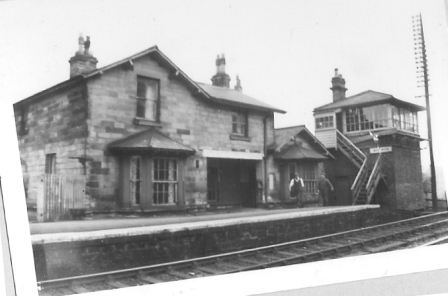Railways
East Coast Mainline
The station witnessed daily the passage of 40 to 50 through trains but at that time only two trains stopped there on week days at 7.42 am for Newcastle from Darlington and at 8.30 am to Darlington from Newcastle. The only Sunday train stopped at 8.30 am on its way from Newcastle to Darlington. For the rest of the day the platforms were virtually deserted but never quiet as they echoed to the roar of mighty expresses and the rhythmic clanking of freight trains.
|
Hitachi Rail Europe |
After many months of campaigning the decision to bring the Hitachi rail project to Aycliffe was announced on the 25 July 2012 by the Government’s Transport Minister, Justine Greening and Chiaki Ueda, Chairman of Hitachi Rail Europe.
Aycliffe Village Local History Society visit to Hitachi, October 25, 2017 |
|
Aycliffe Station courtesy Mrs Flower |
Heighington Station in the early 1950s. On the left is the Station Master, Mr Horner, and next to him Mr W. Robinson. |
View of Aycliffe from the railway |
Heighington Station in the early 1950s |
Station Terrace |
Railway Cottages near Heighington Station. Mr & Mrs Brown, Mrs Robinson, Mrs Lester, Trevor and Melvin Robinson |
Aycliffe Station, April 3, 1949 |
|
Aycliffe Station 1965 |
|
Aycliffe Station |
|
Aycliffe Station, courtesy of Miles Snowden |
Aycliffe Station, courtesy of Miles Snowden |











